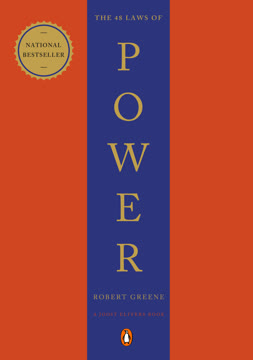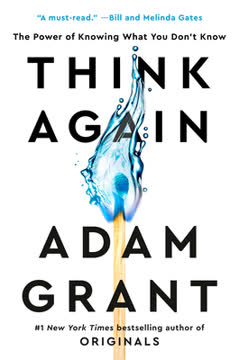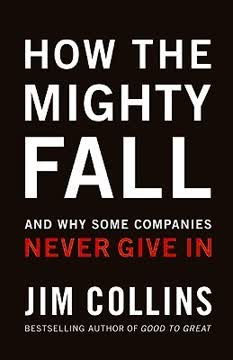つの重要なポイント
1. レベル5のリーダーシップ:偉大さの意外な基盤
レベル5のリーダーは、自らのエゴを抑え、偉大な会社を築くという大きな目標に向けてエネルギーを注ぐ。
謙虚でありながら決然としている。 レベル5のリーダーは、個人的な謙虚さと職業的な意志の矛盾した融合を持つ。彼らは自分自身のためではなく会社のために野心を抱き、成功は自分以外の要因に帰し、失敗には個人的責任を負う。
主な特徴:
- 公の称賛を避ける強い謙遜を示す
- 静かで冷静な決意をもって行動し、カリスマ性ではなく高い基準に依拠する
- 野心を自己ではなく会社に向ける
- 責任を外に求めず、鏡の中の自分を見つめる
これらのリーダーは、個人的な謙虚さと職業的な意志という矛盾した組み合わせによって、永続的な偉大さを築く。彼らはパットンやシーザーよりもリンカーンやソクラテスに近い存在だ。
2. まず「誰を」、次に「何を」:正しい人材をバスに乗せる
優れた企業の変革を起こした経営者たちは、まずバスの行き先を決めてから人を集めたのではない。まず正しい人をバスに乗せ(間違った人を降ろし)、その後で行き先を決めた。
戦略よりも人を重視する。 偉大な企業は、戦略を決める前に重要なポジションに適切な人材を配置することに注力する。この方法は、会社の成長に伴う柔軟性と適応力を高める。
基本原則:
- 正しい人がいれば、自発的に動く
- 正しい人は厳しく管理したり報酬で釣る必要がない
- 間違った人がいれば、正しい方向性を見つけても意味がない
この考えは、自己規律のある人材でチームを構築し、特定の戦略に関わらず優れた成果を出せる文化を作ることの重要性を説く。正しい人が活躍し、間違った人が淘汰される環境をつくることだ。
3. 残酷な現実に直面する:ストックデールの逆説
どんな困難があっても最終的に勝利すると揺るぎなく信じる一方で、現在の最も残酷な現実を直視する規律を持たなければならない。
楽観と現実主義の両立。 ストックデールの逆説は、ジェームズ・ストックデール提督に由来し、希望を持ちつつ現実を直視する重要性を強調する。この姿勢により、企業は最終目標を見失わずに情報に基づく判断ができる。
実践のポイント:
- 答えではなく問いかけからリードする
- 強制ではなく対話と議論を重視する
- 責任追及なしに失敗の原因を分析する
- 無視できない「赤信号」メカニズムを構築する
この逆説を受け入れることで、企業は困難を乗り越えやすくなり、失敗から学びつつも挫折しない。逆境に強く柔軟な組織文化を育むのだ。
4. ハリネズミの概念:三つの円のシンプルさ
偉大になるには、単なる有能さの呪縛を超えなければならない。
自分の得意分野を見つける。 ハリネズミの概念は、世界一になれること、経済的原動力、そして深い情熱という三つの重要な要素の交差点を理解することにある。
三つの円:
- 世界一になれること(なれないことも含む)
- 経済的原動力となるもの
- 深く情熱を注げるもの
この概念は、コアコンピタンスの外にある機会を追い求めるのではなく、本当に卓越できる分野に集中することを促す。複雑さや混乱ではなく、シンプルさと明快さを追求し、三つの要素を理解し整合させることで、持続的な成功と市場での差別化を実現する。
5. 規律の文化:枠組みの中の自由
持続的な偉大な成果は、三つの円に狂信的に一貫した規律ある行動をとる自己規律のある人々の文化を築くことにかかっている。
規律ある人、思考、行動。 規律の文化は、起業家的な文化と規律ある行動倫理の融合だ。専制的な規律者ではなく、ハリネズミの概念の三つの円の枠内に留まる規律を身につけることが重要である。
主なポイント:
- 管理不要な自己規律のある人材を採用する
- 残酷な現実に向き合い洞察を深める規律ある思考を実践する
- ハリネズミの概念に沿った規律ある行動をとる
この文化は、会社のコアフォーカスの枠組み内で創造性と自律性を許容する。明確なパラメータの中で自由と責任を与え、戦略的一貫性を保ちながらイノベーションを促進するのだ。
6. 技術の加速装置:流行やバンドワゴンを避ける
技術そのものが偉大さや衰退の根本原因になることは決してない。
技術の戦略的活用。 グッド・トゥ・グレート企業は技術に対する考え方が異なる。流行に飛びつくのではなく、ハリネズミの概念を直接支える技術に注力する。
技術活用の原則:
- 技術がハリネズミの概念に合致するか見極める
- 合致すれば、その技術の先駆者となる
- 合致しなければ、追随するか無視する
これらの企業は、技術を勢いを加速させる手段として使い、技術自体が勢いを生み出すわけではない。コア戦略に合致した技術を慎重に選び、技術のための技術に陥らない。
7. フライホイール効果:勢いは劇的変化に勝る
グッド・トゥ・グレートは、段階的に、行動ごとに、決定ごとに、フライホイールの回転ごとに積み重なり、持続的で壮大な成果を生み出す累積的なプロセスである。
一貫した累積的進歩。 フライホイール効果は、劇的な一発の変革ではなく、小さな成功を積み重ねて勢いを生み出すことでグッド・トゥ・グレートの変革が起こることを示す。
フライホイールの段階:
- 規律ある人々
- 規律ある思考
- 規律ある行動
- 蓄積
- ブレイクスルー
この概念は、偉大さを達成するには粘り強さと一貫性が重要であることを強調する。単一の変革プログラムやイノベーションに頼るのではなく、良い決定を積み重ねていくことだ。
8. グッド・トゥ・グレートからビルト・トゥ・ラストへ:卓越の持続
偉大さは状況の産物ではない。偉大さとは、意識的な選択の結果である。
永続する偉大さ。 グッド・トゥ・グレートの旅は始まりに過ぎない。卓越を持続するためには、単に利益を追うだけでなく、コアバリューと目的を企業の根幹に刻み込む必要がある。
持続的偉大さの要素:
- コアイデオロギーを守る
- 進歩を促す
- 短期的行動を長期的ビジョンに整合させる
この最終概念は、『グッド・トゥ・グレート』の考えをコリンズの前作『ビルト・トゥ・ラスト』と結びつける。偉大になるのは状況ではなく選択であり、変化する世界に適応しつつコア原則への継続的なコミットメントが必要だと説く。
最終更新日:
FAQ
What's Good to Great about?
- Transforming Companies: Good to Great by Jim Collins examines how companies transition from being merely good to achieving sustained greatness.
- Research-Based Insights: The book is based on a five-year research project analyzing companies that made the leap to greatness and sustained it for at least fifteen years.
- Framework for Success: Collins presents a framework including concepts like Level 5 Leadership, the Hedgehog Concept, and a Culture of Discipline.
Why should I read Good to Great?
- Practical Application: The book provides actionable insights applicable to various organizations, not just businesses.
- Timeless Principles: Collins emphasizes that the findings are universally applicable, guiding any organization through change.
- Inspiring Stories: It includes compelling case studies of companies like Walgreens and Kimberly-Clark, illustrating success through disciplined practices.
What are the key takeaways of Good to Great?
- Level 5 Leadership: Great companies are led by leaders who combine personal humility with professional will.
- Hedgehog Concept: Successful companies focus on what they can be the best at, what drives their economic engine, and what they are deeply passionate about.
- Culture of Discipline: A culture fostering self-disciplined people who take disciplined action is crucial for maintaining focus.
What is the Hedgehog Concept in Good to Great?
- Three Intersecting Circles: It is defined by the intersection of what you can be the best at, what drives your economic engine, and what you are deeply passionate about.
- Simplicity and Clarity: The concept emphasizes simplicity in strategy, allowing companies to align decisions with core strengths.
- Example of Walgreens: Walgreens focused on being the best at convenient drugstores, driving their remarkable stock performance.
What is Level 5 Leadership as described in Good to Great?
- Duality of Traits: Level 5 leaders exhibit a blend of personal humility and professional will, prioritizing the company’s success over their own ego.
- Focus on Successors: They prioritize setting up successors for success, ensuring the company’s long-term viability.
- Examples of Leaders: Leaders like Darwin Smith of Kimberly-Clark exemplify Level 5 leadership through selfless dedication.
How do good-to-great companies confront brutal facts?
- Honest Assessment: They maintain a culture where brutal facts are confronted head-on, allowing informed decisions.
- Stockdale Paradox: They retain faith in eventual success while confronting harsh realities, helping navigate challenges.
- Example of Kroger: Kroger’s leadership transformed their business model in response to market changes, leading to success.
What is a Culture of Discipline in Good to Great?
- Self-Disciplined People: It is characterized by self-disciplined individuals taking action aligned with the company’s Hedgehog Concept.
- Freedom Within Framework: Companies foster an environment where employees innovate within a structured framework.
- Contrast with Comparison Companies: Unlike others, good-to-great companies build enduring cultures of discipline beyond individual leaders.
What role does technology play in Good to Great?
- Technology as an Accelerator: Technology is viewed as an accelerator of momentum rather than a creator of it.
- Pioneering Applications: Companies like Walgreens became pioneers in applying technology that supported their core strategies.
- Avoiding Technology Traps: The book warns against relying solely on technology without understanding its fit into the overall strategy.
What is the Flywheel Effect in Good to Great?
- Cumulative Momentum: It describes building momentum through consistent, disciplined actions over time.
- No Single Defining Moment: Transformations result from many small pushes, not a single breakthrough.
- Sustained Results: Companies experience sustained performance improvements, creating a self-reinforcing cycle of growth.
What is the Doom Loop in Good to Great?
- Cycle of Inconsistency: It describes companies that fail to achieve sustained greatness by lurching from one initiative to another.
- Misguided Strategies: These companies attempt breakthroughs through large acquisitions rather than incremental improvements.
- Failure to Learn: They often fail to confront brutal facts, leading to a lack of accountability and adaptability.
What are the best quotes from Good to Great and what do they mean?
- “Good is the enemy of great.”: Settling for good prevents organizations from achieving greatness, urging continuous improvement.
- “You must retain faith...”: Balancing optimism with realism is key, as highlighted by the Stockdale Paradox.
- “The right people will do the right things...”: Emphasizes the importance of having the right people aligned with company values.
How can I apply the concepts from Good to Great to my organization?
- Identify Your Hedgehog Concept: Understand what your organization can be the best at, what drives your economic engine, and what you are passionate about.
- Foster Level 5 Leadership: Encourage leaders to embody Level 5 traits, focusing on humility and long-term success.
- Create a Culture of Discipline: Build a disciplined culture where self-motivated individuals take action aligned with organizational goals.
レビュー
『Good to Great』は賛否両論の評価を受けている。本書の研究手法やリーダーシップ、規律、そしてコアとなる強みに焦点を当てた洞察は多くの読者から高く評価されている。ビジネスの枠を超えて応用可能な概念として理解されている一方で、批判的な意見も少なくない。原則が常識的すぎること、サンプル数が少ないこと、そして取り上げられた企業の中には後に業績が低迷した例があることが指摘されている。また、時代遅れの事例やキャッチフレーズに不快感を抱く読者もいる。総じて影響力のあるビジネス書とみなされているが、その持続的な有効性や科学的妥当性については意見が分かれている。




















